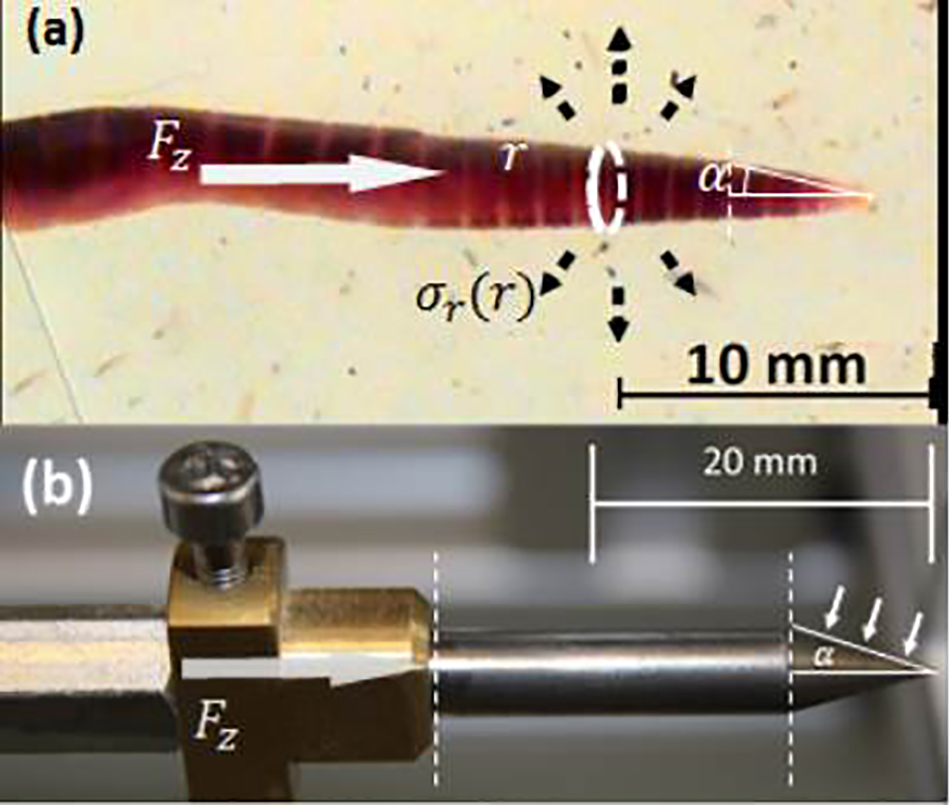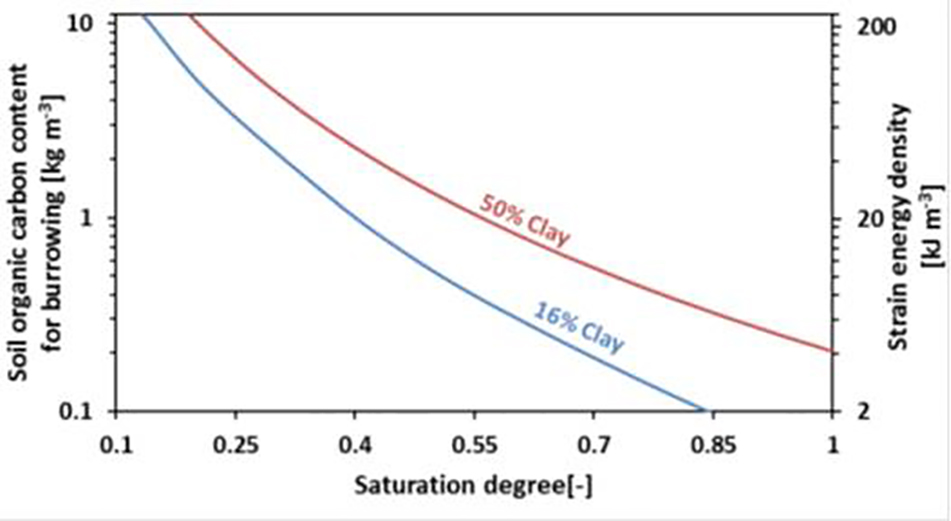Modeling Mechanics and Dynamics of Soil Bioturbation by Earthworms and Plant Roots
The sub terrestrial activities of burrowing earthworms and growing plant roots contribute significantly to the formation and restoration of soil structure. We quantify key mechanical processes governing such activities in order to mechanistically compute the energetic requirements for such activities. These results will allow us to better predict the conditions and rates that earthworms and plant roots contribute to soil restoration as well as determining environmental conditions (saturation, soil type) where such biotic activities would cease. As a first step modeling approach, we consider plastic cavity expansion to describe soil penetration by earthworms and plant roots. For the case of earthworms, the strain energy density required for soil penetration can be used to predict the minimum amount of soil organic matter required to create a given burrow.


Team: Siul Ruiz, Dani Or, Stan Schymanski
Funding: SNF, grant number 406840_143061Biophysical processes controlling restoration of compacted soil structure - long-term soil structure observatory and mechanistic studies
Students: Siul Ruiz
Contact:
